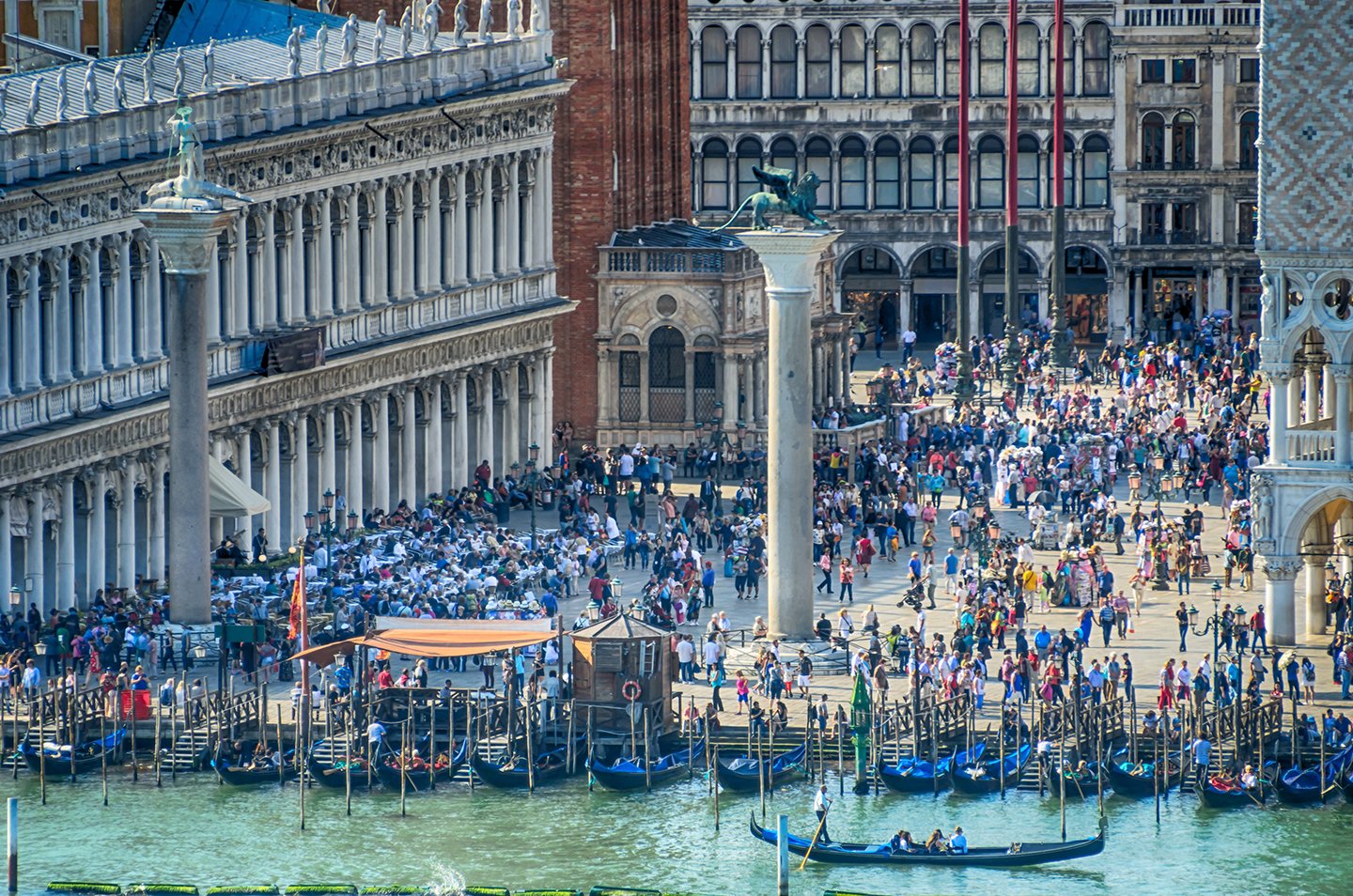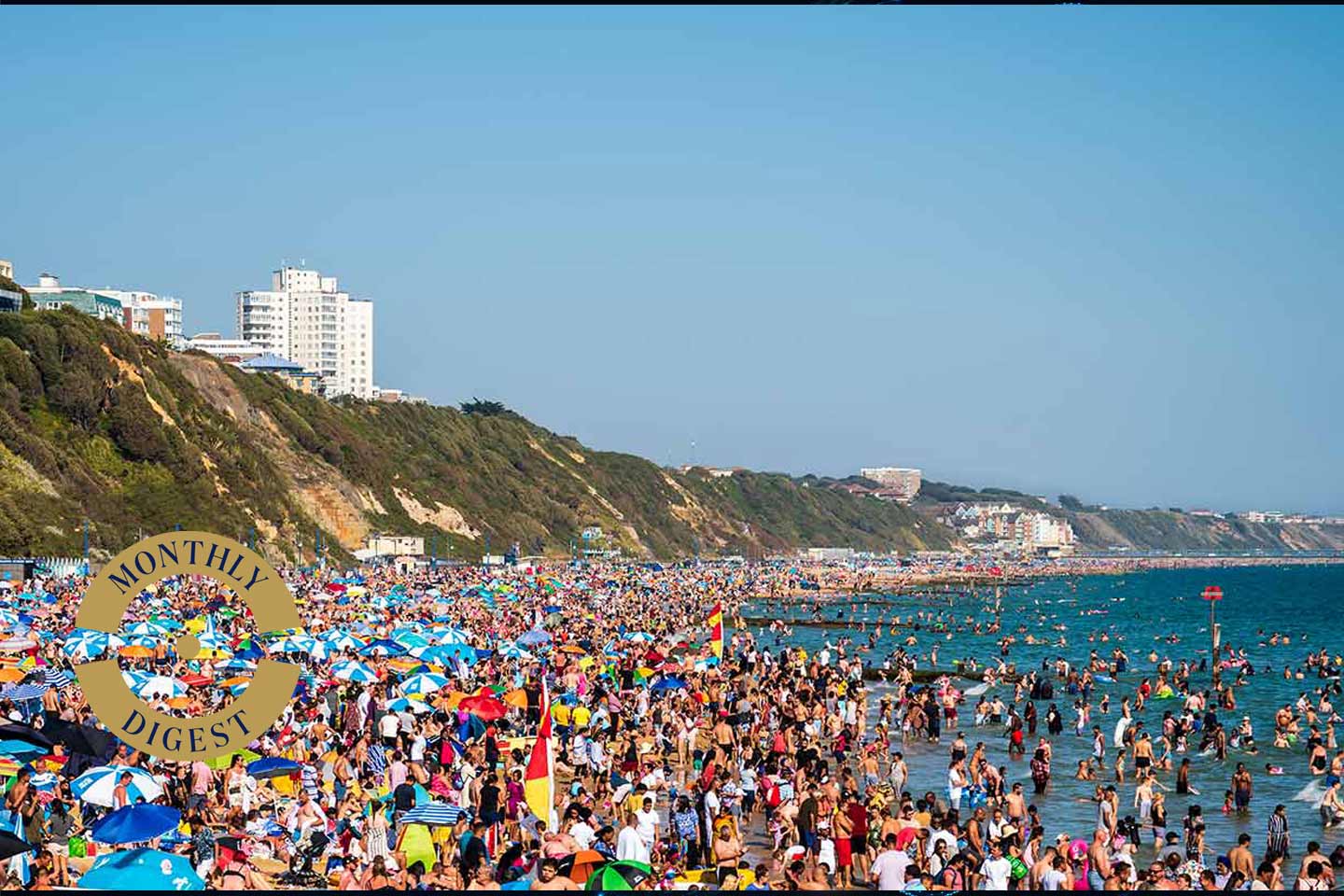In this monthly news-based digest, we delve into the hidden implications and unexpected opportunities that overtourism creates. Get ready for an enlightening journey that could challenge your choice of summer travel destinations as we explore the untold stories behind this issue.
----HOSPITALITY INSIGHTS----
Factors fueling the surge in tourist numbers
In recent months, hospitality and tourism industry actors have been eagerly awaiting projections regarding the volume of domestic and international travelers for 2023, hoping that the numbers will reach the level of 2019. Based on current trends, it is expected that in 2023 global tourism will actually outperform 2019, which might be partly due to revenge tourism.
For many actors in the industry, this is good news. However, voices have begun to denounce what is being called ‘overtourism’. For some observers, it has gotten out of hand and there are simply too many tourists. It is true that when you look at the numbers, overtourism is an issue. As an example, in Europe, the ratio of nights spent in tourist accommodations relative to the total population of permanent residents of the area (also called ‘tourism intensity’), is 19.9 nights in Paris per resident and 14.1 nights in Prague. As a result, some local and national governments are taking action to control or reduce the negative impact of overtourism.
While many factors explain why cities and regions are facing overtourism, there are a few actors in the hospitality and tourism industry that are playing a key role in strengthening it. For instance, Airbnb has been roundly criticized for aggravating the phenomenon by increasing markedly the amount of accommodations available at a destination during peak periods. Moreover, the cruise industry has often been criticized for unleashing thousands of daily tourists on international cities such as Venice, or sometimes even in small ports in Norway.
What are the consequences of ignoring overtourism?
Overtourism has many negative impacts at diverse levels. First, it disturbs the life of the locals as they have to deal daily with the throngs of tourists walking around and stopping everywhere to take selfies.
Second, it drives up local prices, whether it be goods at the supermarket or the corner store, as in Berlin, which impacts cost of living for locals. Prices are particularly impacted by the generalization of offers such as Airbnb.
Third, overtourism also harms the environment. In addition to the global impact of mass tourist transportation in terms of greenhouse gas emissions, overtourism also alters the local environment and actions must be taken to reduce it.
As stated by the OECD, it “damages sites and local environments, and disrupts the lives of residents. Offering alternative niche options, such as ecotourism, can help promote more sustainable practices and diversify the sector”.
Combatting overtourism: Effective strategies to ease the burden on popular destinations
Consequently, many actions have been put in place by local or national governments to reduce the negative impacts of overtourism. For instance, Hallstatt, an alpine village in Austria that is rumored have inspired the Disney film “Frozen”, has put up a wall to prevent tourists from stopping to take selfies. This is just one of the village’s measures that aim to limit the influx of tourists.
In Florence, tourists can be charged if they eat on the pavement and on doorsteps in front of shops. Moreover, the Italian city of Portofino has introduced 'no-waiting zones' to also prevent tourists from hanging around to take selfies. Additionally, there are fines of €270 to dissuade tourists from lingering on the quay for too long between 10:30 am and 6 pm.
While these measures are more to improve the flow of tourists sur place, some destinations have taken more drastic measures to curb overtourism. For example, in a region of Austria, authorities are putting in place a cap on the volume of lodging options, freezing the number of available beds at 2019 levels.
In northern Italy, the regional authorities have taken similar actions and even put restrictions on specific touristic destinations to reduce mass tourism, such as no private vehicles at night or mandatory pre-registration. Moreover, some destinations have chosen to impose strict booking restrictions or quotas, while others have resorted to raising prices, and in some cases, both strategies are applied simultaneously. In another example, Bhutan, a country known for its focus on Gross Domestic Happiness, now imposes an additional tax of $200 per night for visitors wishing to stay there.

Amsterdam has even launched a campaign to discourage unruly visitors from descending on the city. According to the city’s website, “Visitors who target Amsterdam to ‘go wild’ and search online with terms such as ‘stag party Amsterdam’, ‘cheap hotel Amsterdam’ and ‘pub crawl Amsterdam’, will be shown warning advertisements. These advertisements show the risks and consequences of anti-social behavior and excessive drug and alcohol (ab)use, such as being fined, being arrested by the police, getting a criminal record, hospitalization and health damage”. In addition, many popular destinations such as Santorini, Barcelona and the Amalfi Coast have been flagged as places to avoid this summer due to fears of overtourism.
Although the actions put in place should reduce excess tourism, those destinations will likely stay on people’s bucket lists in the short term. However, some experts question if the combined impacts of Covid-19, the climate crisis, the war in Ukraine and overtourism might change how people view “must-see” destinations, potentially leading to a new travel bucket list. Indeed, today’s most popular destinations, think Paris or the South of France, may not end up on the top of the list anymore.
---- HOSPITALITY INNOVATION----
Overcrowding, taxes and flagged destinations
Overtourism poses new challenges but also opportunities. Increased awareness of overtourism in 2018 was countered by the emergence of under-tourism during the COVID-19 pandemic, and last year the concept of revenge tourism emerged. The issue is not new: local movements and protests against mass tourism have been around for years.
This raises the question: Can innovation find its place in solving this problem in the future? After studying the latest news mentioned above, it is clear that familiar strategies are being used to solve this problem; however, some new "innovations" are also being implemented.
Unconventional routes and the dark side of Instagram-worthy photos
When examining the troubling trend of overtourism, the prospects may seem bleak for cities and countries trying to find effective solutions. But what if tourism itself could be seen as a solution, rather than a problem? The innovative approach is to turn tourism into a regenerative force that has the potential to create positive impacts, not merely minimize harm.
While this concept may initially seem unsubstantiated, numerous examples illustrate that creative approaches within this transformative journey are possible. These include initiatives that focus on revegetation, minimizing disturbances to nature and vulnerable species, and promoting a more equitable distribution of economic benefits by redirecting tourist flows off the beaten track. One notable innovation involves a change in the marketing strategy of crowded places like Parkstad Limburg in the Netherlands, which is turning from an attraction where people tended to spend only a short time into a museum-like experience celebrating local culture.
Social media and influencers are often blamed for overtourism and an obsession with photo shoots. In their relentless pursuit of ‘hidden gems’, travelers seeking the next “instagrammable” location can divert attention away from iconic destinations like Paris or Venice, leading—unfortunately—to an influx of tourists to unprepared places without any infrastructure or local businesses.
 Instagram vs. Reality - Pura Lempuyang, Bali, Indonesia (Source bottom image).
Instagram vs. Reality - Pura Lempuyang, Bali, Indonesia (Source bottom image).
Browsing travel-related user-generated content (UGC) significantly influences the desire of potential travelers to visit these emerging destinations. UGC impacts the tourism decisions of 84% of Gen Z travelers who have the propensity to support ethical and sustainable tourism, which is expected to grow by $335 billion over the next four years. This dynamic approach opens up a marketing gold mine for all players! We foresee a wave of innovations emerging in this area.
Advances in technology and slow travel: The hope for tourism
Technology serves as a trusted ally in addressing the pervasive issue of overtourism. For example, even coastal areas in Germany face overcrowding due to an influx of visitors. To tackle this, Blickfeld Lidar sensors are used to manage the flow of tourists on the North Sea coast and offer alternative destinations during peak occupancy. This approach ensures a more balanced flow of tourists and promotes lesser-known leisure facilities in the region.
Another example is the Israeli startup Optibus, the first ‘unicorn’ in the public transportation sector to use artificial intelligence to analyze multiple factors with the end-goal of optimizing bus systems. AI has helped in streamlining schedules, which reduces the number of empty buses and thus puts fewer vehicles on the roads. It also eliminates, the company estimates, the emission of several million tons of CO2 per year.
The public’s increasing demand for eco-friendly travel options is self-evident, as reflected in the significant growth in bookings on Byway, a booking platform created by sustainable travel experts that shuns air travel. In the last year, bookings on Byway have surged by an impressive 450%, propelling the popularity of slow travel to new heights. Swiss travel tech startup Viatu is making a $1 million investment in its sustainable booking platform, furthering its mission to streamline sustainable travel and revolutionize the way the world is explored.
Sustainable transportation offers a viable solution to address the negative consequences posed by overtourism. Given that it contributes to CO2 emissions and climate change, innovative transportation options can help mitigate tourism’s impact. For example, SAS's first-ever all-electric flights, with 30 seats on each of its three flights scheduled for 2028, were fully booked within hours. As a pioneer in the aviation industry, SAS wants to revolutionize travel and argues that it was the first commercial airline to fly over the North Pole, shortening the flight time between continents.
Tourism-related emissions account for nearly 22% of global transport emissions, so it is hardly surprising that many startups are actively developing sustainable options. For example, CarbonChain tracks emissions data and helps transportation companies optimize their environmental impact. Given the challenges caused by overtourism, these innovations could shape the future of travel and create a sustainable paradigm that balances the needs of both destinations and travelers, paving the way for a more inclusive and responsible travel experience.
---- HOSPITALITY INSPIRATION----
The reality of overtourism: Must read, follow, listen & watch
- Explore the book entitled Overtourism: Lessons for a Better Future to further understand the issue of overtourism.
- Unlock the keys to sustainable success and become a master of creating positive change with 7 Roles to Create Sustainable Success: A Practical Guide for Sustainability and CSR Professionals by Carola Wijdoogen.
- Dig into the new documentary “The Last Tourist” and get inspired to make better, more responsible travel choices for the benefit of society and the environment.
- Enjoy the Hypertourismos podcasts and gain a different perspective on overtourism’s impact on Santorini and its population.
- Listen to the episode “How to Start a Destination Organization When the World is Closed” by The Architects of Destination Advocacy Podcast to hear about more practical strategies for building resilient destinations even during challenging times.
- Tune in to DMOU, Destination Marketing Organization University, a podcast about destination marketing that showcases the brightest voices in the industry as they share groundbreaking case studies and cutting-edge philosophies that are shaping the future of destination marketing.
Research Assistant & Visiting Lecturer at EHL Hospitality Business School

Research Associate at EHL Hospitality Business School




